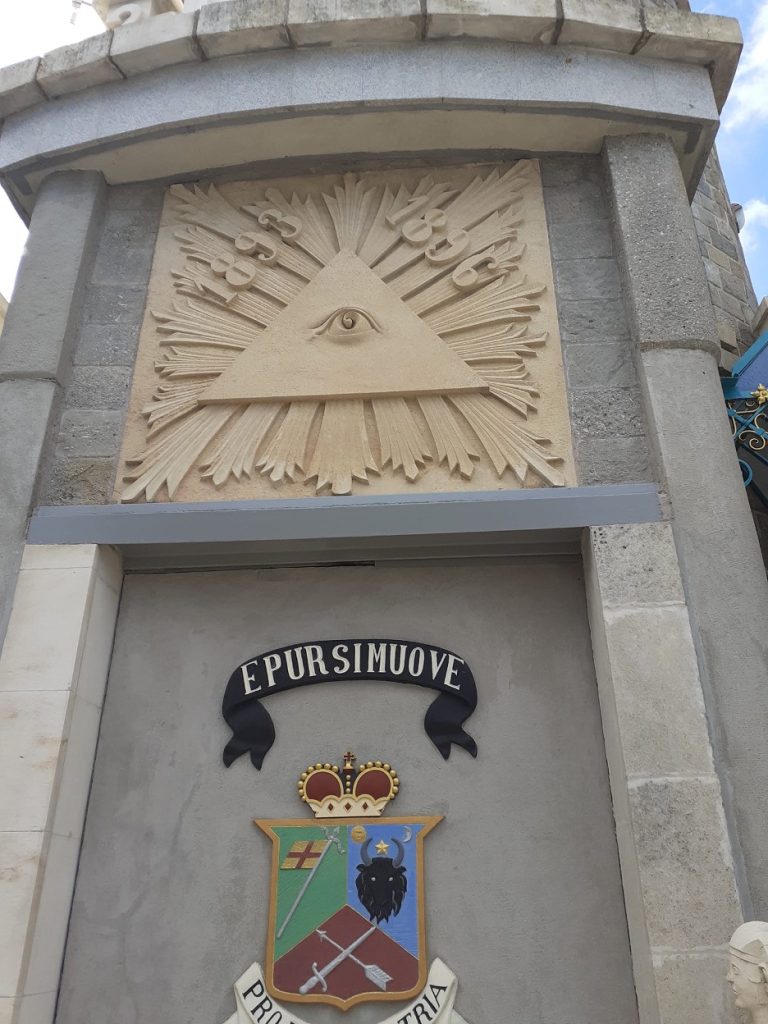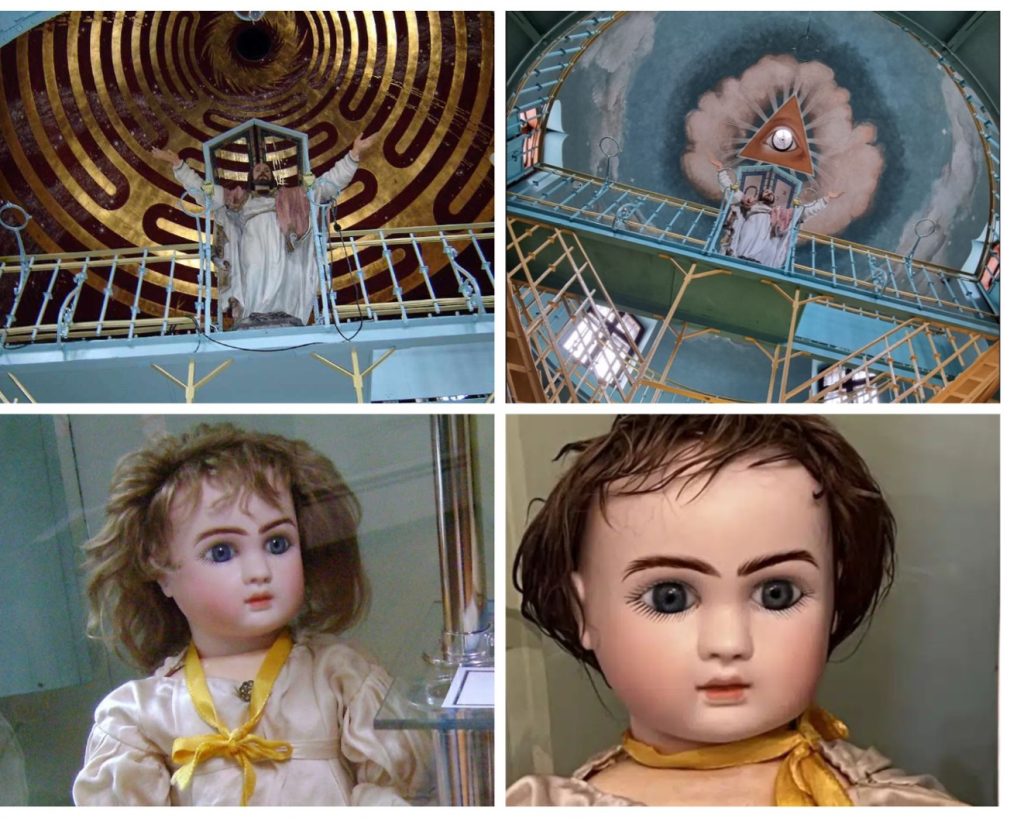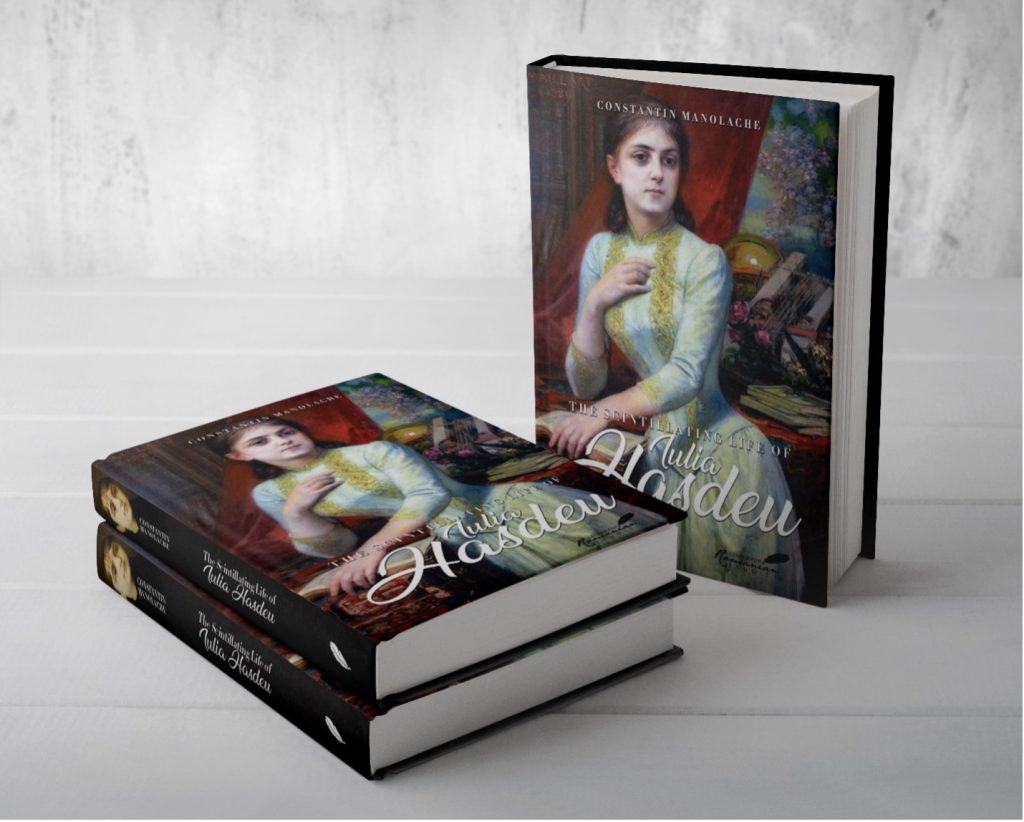
Please follow us on Gab, Minds, Telegram, Rumble, GabTV, Truth Social, Gettr, Twitter
The “Iulia Hasdeu” Castle, also known as “The Temple of Spirits,” or “The Temple of the Magi,” is located in Câmpina, Prahova County, approximately 97 kilometers north of Bucharest. It was built by the famous Romanian writer, philologist, and historian Bogdan Petriceicu Hasdeu (1838-1907). He built the Castle between 1893 and 1896 and dedicated it to the memory of his daughter Iulia, who died of tuberculosis two months before her nineteenth birthday in 1888.
Stories say B.P. Hasdeu used the residence to communicate with his daughter through spiritism, a popular practice of the high social class in the nineteenth century The main entrance bears the inscription “E pur si muove,” a quote from Galileo meaning “And Yet It Moves.”

After his death, Hasdeu’s heirs, members of the Romanian Royal Family, failed to convince the authorities to open a museum as he had asked for in his will. However, the museum was eventually opened to the public after World War I. It employed specialized personnel from 1932 until it was abandoned in 1947.
The building is an architectural monument designed by Hasdeu himself and restored several times in the years that followed. The exhibitions include approximately 300 objects and showcase family photos, documents, manuscripts, furniture, and personal items that belonged to Hasdeu, and his two Iulias, his wife and his daughter. It also contains the archives of Bogdan Petriceicu Hasdeu, sketches for the castle, and the first editions of his and Iulia’s literary works.
The castle underwent restoration and consolidation work after the earthquake of 1977, thanks to the joint efforts of the Prahova Culture Inspectorate, the Campina Municipal Council, the Museum of History and Archeology, and the Hasdeu Foundation. On June 17, 1994, the B.P. Hasdeu Memorial Museum was partially opened, and on February 25, 1995, it became fully available to the public.

The castle museum features Hasdeu's office, which includes Iulia's writing desk from Paris, and his bedroom, which is painted with lilies, Iulia's favorite flowers. Visitors can also admire a painting of Iulia Hasdeu on the day of her death and a hole in the wall made especially so Iulia's spirit could enter the castle in the spiritism room. Her name is engraved on the two stone chairs in front of the castle, and a painted wooden sculpture of Jesus Christ made by the French artist Casciani sits behind a bust of Iulia Hasdeu.
The castle was restored again between 2020 and 2022, and now it faces controversy. The original ceiling of the dome above the main hall, which featured a maze pattern, was turned into a modern-day painting in a bright shade of blue, displaying the Divine Eye. For some reason, Iulia’s beloved doll received “a makeover” during the restoration process, and went from having long bushy hair to short flat hair. We asked the representatives of the museum for an official statement, but they have not offered a comment.

Even to this day, the circumstances surrounding the construction of this building remain unclear. However, what is known is that Hasdeu reportedly received the plans for the castle from his deceased daughter during a spiritualism session.
There were many reports of paranormal activity from locals and visitors. The castle management said Iulia’s piano (which is broken) could be heard playing. Another report came from a group of students who decided to spend the night at the castle:

"We climbed a tree and stayed hidden all night. When the roosters crowed, Miss Iulia came out on the left terrace. She was dressed in a white gown and had daisies in her arms. Her hair was tied up in a bun with a star holding it in place. The next morning, a few daisies were found by the maintenance personnel. It was September.”
Other reports say people can hear Hasdeu howling like an animal, grief-stricken by his daughter’s death.
Iulia Hasdeu (1869-1888) was a Romanian writer and intellectual, best known for her exceptional precocity. She was the daughter of the Romanian writer and politician Bogdan Petriceicu Hasdeu, and was raised in a family that valued education and culture.
She was an incredibly gifted child who began to write poetry and prose at a very young age and was able to speak several languages fluently by the time she was six years old. She was also a talented musician and artist.
Tragically, Iulia died of tuberculosis at the tender age of eighteen, cutting short what many believed would have been a brilliant career. Despite her short life, however, she left behind a few volumes of literary works that are still admired today.

Iulia’s biography recently became available for the first time in the English language. The Scintillating Life of Iulia Hasdeu was published by the Center for Romanian Studies and can be purchased on the official website of Histria Books, Amazon, and all major book retailers in hardcover and eBook formats.